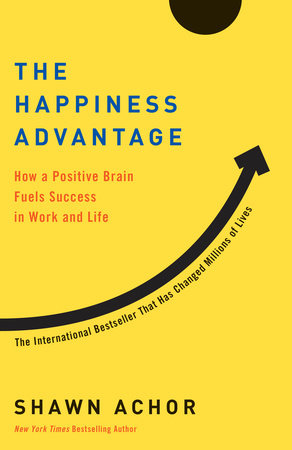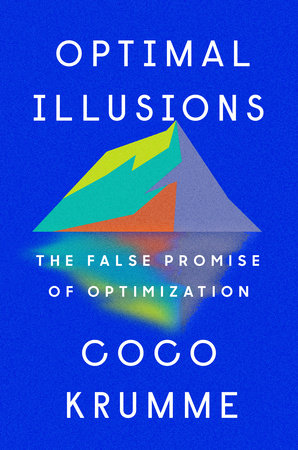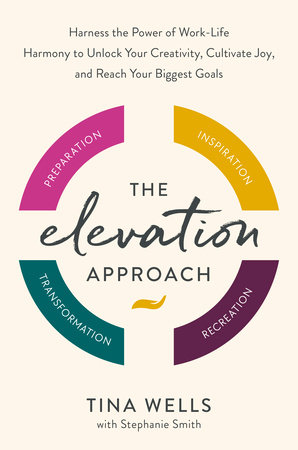Quick Summary
One Sentence Summary
“The Happiness Advantage” by Shawn Achor explores how a positive mindset can lead to success and fulfillment in both personal and professional life.
Big Idea
The central theme is that happiness isn’t the outcome of success, but rather its precursor; by cultivating a positive mindset, we can enhance our performance, creativity, and resilience.
Five Key Ideas
- Happiness Fuels Success: Achor argues that happiness often precedes achievement, challenging the traditional notion that success brings happiness.
- Positive Psychology Principles: The book dives into principles like the Tetris Effect, which emphasizes focusing on patterns of positivity.
- Happiness as a Work Ethic: Achor discusses how happiness can improve work productivity and satisfaction.
- Ripple Effect of Positivity: The book highlights how individual happiness can influence and improve the broader environment.
- Practical Strategies: Achor provides actionable strategies to train the brain for positivity, resilience, and improved performance.
Actionable Advice
- Change Your Mindset: Focus on the positive aspects of your environment and tasks.
- Small Steps: Implement small, daily practices that boost your positive outlook.
- Social Support: Leverage your social network for support and positive influence.
About the Author
Shawn Achor is a renowned positive psychology expert, with a Harvard background, known for his advocacy of happiness and its role in achieving success.
Read Next
- “Mindset” by Carol S. Dweck, exploring the power of our beliefs in shaping our lives.
- “Drive” by Daniel H. Pink, examining what truly motivates us.
- “Flow” by Mihaly Csikszentmihalyi, delving into the psychology of optimal experience and happiness.
In Depth
Happiness Fuels Success
Shawn Achor flips a common belief on its head. He asserts that success doesn’t lead to happiness; instead, happiness is a driving force behind success. It’s a shift in perspective. Traditionally, we think that if we work hard and achieve our goals, happiness will naturally follow. Achor suggests the opposite: start with happiness, and success is more likely to come.
In “The Happiness Advantage,” Achor presents compelling evidence supporting this idea. Happy individuals are more likely to perform better in their jobs, find creative solutions to problems, and have higher levels of energy and resilience. This is not just theoretical. The book is packed with research and case studies to back up these claims.
One detailed example from the book involves a study conducted with doctors. Achor describes how a group of doctors was divided into two groups. One group was primed to be in a happy mood (given a bag of candy) and the other wasn’t. The study found that the doctors in a good mood exhibited enhanced diagnostic abilities and showed almost three times more intelligence and creativity than those in the neutral state. They were also faster in coming up with accurate diagnoses. This example beautifully illustrates the book’s main argument: being in a positive state can significantly improve performance and outcomes.
Achor puts it succinctly:
“Happiness is not the belief that we don’t need to change; it’s the realization that we can.”
The implication of this quote and the broader argument of the book is that by investing in our happiness and cultivating a positive mindset, we open up our ability to change, grow, and ultimately succeed.
But it’s not just about individual success. Achor discusses the contagious nature of happiness. A happy person can positively influence their surroundings, creating a more productive and supportive environment. This can lead to a sort of virtuous cycle, where happiness fosters success, which in turn feeds back into more happiness, not just for the individual but for those around them.
Furthermore, Achor doesn’t leave readers hanging with just the theory. He provides practical strategies for cultivating happiness. These include habits like journaling about positive experiences, regular exercise, and acts of kindness. These small actions, when practiced consistently, can rewire the brain to default to a more positive mindset.
In essence, “The Happiness Advantage” is not just about personal well-being. It’s a roadmap showing how happiness can be the starting point for achieving higher levels of success in various facets of life. It suggests that by shifting our focus from pursuing success in order to be happy to pursuing happiness in order to be successful, we can unlock potential we may not have even known we had.
Positive Psychology Principles
Shawn Achor delves deep into the realm of positive psychology. He introduces principles that redefine how we perceive and achieve happiness. These principles aren’t just abstract concepts; they’re actionable insights grounded in scientific research.
One pivotal principle is the “Tetris Effect.” It’s named after the video game where players arrange falling blocks. Achor uses this as a metaphor to describe how our brains can get stuck in patterns. Just as Tetris players start seeing the world in terms of shapes and spaces, our minds can get locked into seeing only certain patterns, positive or negative.
Achor explains that by training our brains to scan for the positive in our environment, we can cultivate a mindset that seeks out opportunities and solutions rather than dwelling on problems. This principle is crucial because it emphasizes the power of focus. Where we direct our attention determines our emotional and mental state.
To illustrate this, Achor recounts an experiment involving tax auditors. These individuals are trained to look for mistakes and discrepancies, essentially scanning for the negative as part of their job. In the experiment, half the auditors were asked to list three things they were grateful for each day. The results were striking. The group that practiced gratitude not only felt better about their lives in general but also reported higher levels of happiness and optimism.
Achor articulates the significance of this approach:
“By changing the way we perceive ourselves and our work, we can dramatically improve our results.”
This quote underlines the transformative power of positive psychology principles. They are not just feel-good aphorisms; they are tools for altering perception and, consequently, reality.
Another principle Achor discusses is the “Falling Up” principle. This idea revolves around the concept of learning from failure and using adversity as a stepping stone for growth. Instead of seeing setbacks as insurmountable obstacles, individuals can view them as opportunities for learning and improvement. This principle is crucial in building resilience and fostering a growth mindset.
Through these principles, Achor doesn’t just paint a rosy picture of an always-happy life. Instead, he offers a more nuanced understanding. Happiness isn’t about ignoring the negative or pretending problems don’t exist. It’s about developing the ability to recover from setbacks, focus on the positive, and move forward with a sense of purpose and optimism.
In summary, the principles of positive psychology as presented by Achor are practical, science-backed tools for shifting our mindset. They empower us to transform our perception, focus on the positive, and harness our experiences, both good and bad, as catalysts for growth and happiness.
Happiness as a Work Ethic
In “The Happiness Advantage,” Shawn Achor presents the idea that happiness isn’t just a feel-good bonus. It’s a critical component of our work ethic. This key idea challenges the conventional notion that hard work alone leads to success. Achor argues that incorporating happiness into our work ethic enhances productivity, creativity, and ultimately, success.
One powerful example from the book involves a study on happiness and productivity. Achor references research where participants were primed to feel happy (by watching a comedy clip) before undertaking a set of tasks. The results were clear. The happy participants were 31% more productive than their counterparts in a neutral state. This finding is pivotal as it directly links happiness with increased productivity.
Achor emphasizes this connection:
“When we are positive, our brains become more engaged, creative, motivated, energetic, resilient, and productive at work.”
This quote encapsulates the essence of seeing happiness as a work ethic. It’s not just about being in a good mood; it’s about setting the brain up for optimal performance.
But Achor goes further. He suggests that happiness at work isn’t just about individual productivity. It’s also about creating a positive work environment. Happy employees are more likely to collaborate, support each other, and contribute to a positive workplace culture. This, in turn, can lead to lower turnover rates, better team dynamics, and improved overall performance.
Moreover, Achor discusses the concept of “job crafting.” This idea encourages individuals to reshape their jobs to find more meaning and satisfaction. By finding ways to incorporate strengths and passions into their work, individuals can enhance their happiness and, as a result, their effectiveness.
Another critical aspect of this key idea is the long-term impact. Achor points out that the benefits of integrating happiness into our work ethic aren’t just immediate or short-term. Over time, individuals who prioritize happiness in their work are more likely to experience career growth, earn higher salaries, and achieve more significant professional success.
In essence, seeing happiness as a work ethic redefines our approach to our jobs and careers. It shifts the focus from relentless hard work to a more balanced approach where happiness is a catalyst for better performance. It’s about leveraging the positive state of mind to unlock potential, foster collaboration, and create a conducive environment for success. This approach not only benefits individuals but also organizations, leading to a more productive, creative, and ultimately, successful workforce.
Ripple Effect of Positivity
Shawn Achor extends the concept of happiness beyond the individual in “The Happiness Advantage,” emphasizing its broader impact. He introduces the idea that happiness has a ripple effect, influencing not just the individual but also their surroundings. This key idea highlights how personal positivity can spread, impacting teams, organizations, and even entire communities.
A compelling example from the book involves a study on social networks and happiness. Achor references research indicating that a person’s happiness can influence the happiness of others in their social network. This means that if you’re happy, it’s not just beneficial for you; it can positively affect your friends, family, and even acquaintances. The study found that happiness can ripple through social networks up to three degrees of separation.
Achor points out the far-reaching implications of this phenomenon:
“Our positivity can have a profound effect on the people around us.”
This quote underlines the transformative power of positivity. It’s not just a personal attribute; it’s a social force with the potential to create a more positive environment for everyone.
But Achor doesn’t stop there. He delves into how this ripple effect can transform workplace dynamics. Positive leaders and employees can set the tone for their teams, promoting a culture of positivity, collaboration, and high performance. This atmosphere can lead to increased job satisfaction, reduced stress, and better outcomes.
Moreover, Achor discusses the concept of “mirror neurons” in our brains. These neurons allow us to empathize with others and, to some extent, mirror their emotions. This neuroscientific basis further explains how happiness and positivity can spread from person to person, creating a more positive collective environment.
This idea of the ripple effect also ties into concepts of leadership and influence. Achor emphasizes that anyone, regardless of their position, can be a positive influence in their environment. By embodying positivity, individuals can inspire others, motivate teams, and contribute to a more uplifting and productive atmosphere.
In summary, the ripple effect of positivity is about understanding the broader impact of our emotional state. It’s about recognizing that our happiness can be a powerful tool for creating a more positive, supportive, and successful environment, both in personal and professional contexts. This key idea underscores the social responsibility of cultivating positivity, not just for our well-being but for the well-being of those around us.
Practical Strategies
Shawn Achor doesn’t just present theories in “The Happiness Advantage”; he offers practical strategies. These strategies are designed to train the brain for positivity, resilience, and improved performance. This key idea is about taking actionable steps to cultivate happiness and leverage its benefits.
One significant strategy discussed is the “20-Second Rule.” Achor emphasizes the power of small energy barriers in shaping our behaviors. By making positive activities easier to start and negative habits harder, we can effectively rewire our habits. Achor shares a personal example: by moving his guitar closer to his workspace, he reduced the effort required to start playing. Consequently, he began practicing more regularly.
This principle is encapsulated in the following quote:
“By making small energy adjustments, we can reroute the path of least resistance and replace bad habits with good ones.”
Another strategy Achor discusses is the practice of gratitude. He talks about the profound impact of simply writing down three new things you are grateful for each day. This practice trains the brain to scan for positives rather than negatives, essentially rewiring our default perspective. Achor cites studies showing that this simple exercise, done consistently, can significantly increase levels of optimism and life satisfaction.
Moreover, Achor delves into the concept of “social investment.” In times of stress or challenge, our instinct might be to retreat into ourselves. However, Achor advises the opposite approach. By investing in our social relationships, we can build a support network that not only helps us through tough times but also enhances our overall happiness.
In the workplace, Achor suggests strategies like recognizing the accomplishments of colleagues and investing in team-building activities. These actions not only foster a positive environment but also contribute to a sense of belonging and shared purpose.
Meditation is another practical strategy discussed. Achor explains how regular meditation can not only reduce stress but also enhance creativity and improve brain function. He cites research showing that even short periods of meditation can have significant benefits.
Lastly, Achor talks about the importance of exercise. Regular physical activity is shown to have a plethora of benefits, from reducing symptoms of depression to improving focus and cognitive function. Achor encourages incorporating exercise into daily routines as a way to boost mood and mental clarity.
In essence, the practical strategies outlined by Achor are about making small, manageable changes that can have a profound impact on our happiness and success. These strategies are grounded in research and designed to be easily integrated into daily life. They underscore the message of “The Happiness Advantage”: happiness is not just a feeling; it’s a skill that can be cultivated and harnessed for greater well-being and achievement.
Actionable Advice
- Practice Gratitude: Every day, write down three new things you’re grateful for.
- The 20-Second Rule: Make positive habits easier to start by reducing the effort by 20 seconds. Make negative habits harder by adding a 20-second barrier.
- Meditate Daily: Spend a few minutes each day in meditation to enhance focus and reduce stress.
- Exercise Regularly: Incorporate physical activity into your routine to boost mood and cognitive function.
- Perform Random Acts of Kindness: Once a week, perform a random act of kindness for someone.
- Deepen Social Connections: Invest in your relationships, both personal and professional.
- Smile More: Consciously smile more often to improve mood and encourage positivity.
- Utilize Positive Language: Replace negative language with positive alternatives in your daily conversations.
- Visualize Success: Spend time visualizing your goals and the steps to achieve them.
- Embrace the Tetris Effect: Train your brain to scan for the positive in every situation.
About the Author
Shawn Achor is an esteemed American author, speaker, and positive psychology advocate. Born in 1978 in Waco, Texas, he grew up in a family deeply committed to teaching; both parents were educators. Achor attended Baylor University, initially studying English and religion before a change to pre-med. Eventually, he found his true calling in positive psychology while at Harvard, where he graduated magna cum laude and later earned a Master’s in Christian and Buddhist ethics.
Achor’s work primarily focuses on the connection between happiness and success, challenging traditional beliefs that success leads to happiness. Instead, he posits that happiness is a precursor to success. His bestselling book, “The Happiness Advantage,” encapsulates his research and teachings, emphasizing how positive psychology can enhance both personal and professional lives.
Achor believes in the power of positivity, resilience, and the ripple effect of happiness in improving overall well-being and performance. He has delivered lectures in over 50 countries, sharing his insights with a diverse audience ranging from Fortune 100 companies to schools and non-profits. Achor’s mission is to bridge the gap between academic research and real-world application, empowering individuals to lead happier, more fulfilling lives.
Read These Next
You might like these similar books
- “Drive: The Surprising Truth About What Motivates Us” by Daniel H. Pink
- “Mindset: The New Psychology of Success” by Carol S. Dweck
- “Flourish: A Visionary New Understanding of Happiness and Well-being” by Martin E.P. Seligman
- “The Power of Habit: Why We Do What We Do in Life and Business” by Charles Duhigg
- “Atomic Habits: An Easy & Proven Way to Build Good Habits & Break Bad Ones” by James Clear
FAQ
Q: What is the main theme of ‘The Happiness Advantage’?
A: The main theme is that happiness leads to success, not the other way around.
Q: Who is the book suitable for?
A: It’s suitable for anyone looking to improve their happiness and success in both personal and professional life.
Q: Does the book provide practical advice?
A: Yes, it offers actionable strategies to cultivate happiness and leverage its benefits.
Q: Is ‘The Happiness Advantage’ based on scientific research?
A: Yes, Shawn Achor supports his concepts with research from positive psychology.
Q: Can the book’s principles be applied in the workplace?
A: Absolutely. The book provides insights on enhancing productivity and creating a positive work environment.
Q: How long does it take to read the book?
A: It varies, but on average, it takes about 4-6 hours to read the entire book.
Q: Is ‘The Happiness Advantage’ only for individuals, or can teams benefit too?
A: Both individuals and teams can benefit from the principles outlined in the book.
Q: Does Achor discuss the challenges of achieving happiness?
A: Yes, he acknowledges obstacles and provides strategies to overcome them.







